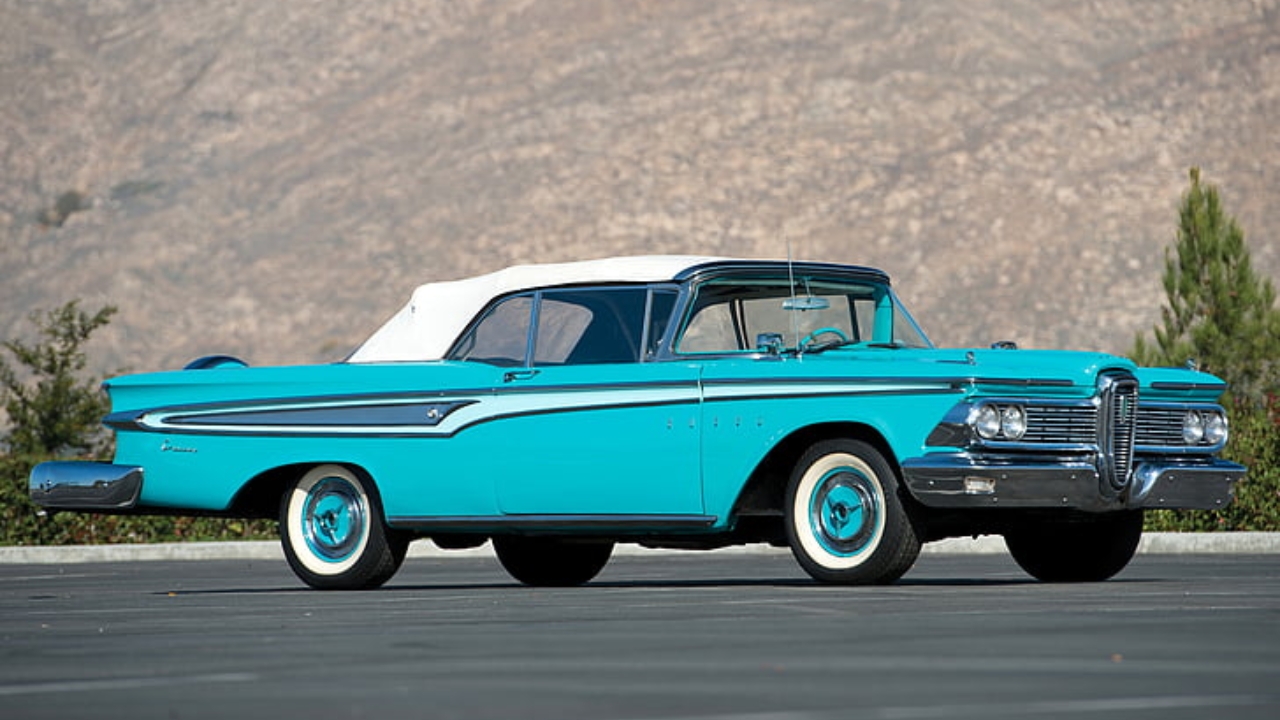The Ford Edsel stands as one of the most notorious failures in automotive history, costing Ford Motor Company over $250 million (equivalent to $2.66 billion in 2024 dollars) during its brief three-year run from 1958 to 1960. Named after Henry Ford’s son, Edsel Ford, this ambitious project was intended to fill the gap between Ford’s entry-level and Mercury brands, competing directly with General Motors’ Pontiac, Oldsmobile, and Buick divisions.
Market Research Gone Wrong
The Planning Phase
Ford spent 10 years and $250 million on planning one of its first brand-new cars in decades, with market research suggesting that by 1965, half of all U.S. families would be in the $5,000-and-up bracket. The company believed the medium-priced car market was expanding and that Edsel could sell up to 400,000 units annually.
Fatal Design Decisions
The Edsel’s most distinctive feature became its downfall: the vertical grille that critics compared to a “horse collar” or “toilet seat.” This controversial design element, meant to distinguish the brand, instead became a source of public mockery and consumer rejection.
Economic Timing and Market Forces
The Perfect Storm
Economic recession hit the U.S. only weeks after Edsel’s launch, catastrophically affecting sales of medium-priced cars. Consumer preferences shifted dramatically toward economy vehicles like the Volkswagen Beetle, which offered superior fuel economy and affordability. At least five other upscale brands—DeSoto, Hudson, Nash, Packard, and Studebaker—would succumb during this period.
According to NHTSA vehicle safety data, the automotive industry has historically been vulnerable to economic fluctuations, with luxury and mid-priced segments experiencing the most volatility during recessions.
Production and Quality Issues
The first Edsels built were plagued with production problems, enraging dealers who struggled to sell the problematic vehicles. The lack of distinction from other Ford products further hindered sales, as most chassis and powertrain components were similar to existing Ford and Mercury models.
Key Statistics and Data
| Metric | Edsel Performance | Industry Context |
|---|---|---|
| Development Cost | $250 million | Equivalent to $2.66B today |
| Production Years | 1958-1960 | Only 3 model years |
| Initial Dealers | 1,187 exclusive dealers | Compared to GM’s 16,000 stores |
| Sales Target | 400,000 annually | Never achieved |
| Models Available | 18 different models | 4 main series |
Source: Library of Congress Automotive Industry Research Guide
Lessons from the Failure
Marketing Overhype
Ford’s marketing campaign created enormous hype, with ads claiming the Edsel would revolutionize the automotive industry, but when finally revealed, it didn’t live up to the lofty promises. The company conducted virtually no test marketing with actual consumers, a critical oversight that modern automotive manufacturers now consider essential.
Design by Committee
Ford had too many executives working on the Edsel project, resulting in a lack of clear direction. Historical analysis shows that successful vehicles like the Model T and Volkswagen Beetle were conceived by individuals or small teams, not large committees.
Legacy and Collector Value
From Flop to Collectible
Ironically, the Edsel’s commercial failure has transformed it into a sought-after collector’s item. Today, the scarcity of remaining Edsel adds to their allure, with only a few thousand surviving worldwide. The very features that repelled 1950s consumers—the distinctive grille and unusual styling—now appeal to vintage car enthusiasts.
Modern Safety Standards
Today’s automotive industry operates under strict NHTSA safety regulations that didn’t exist during the Edsel era, ensuring that modern vehicles meet comprehensive crashworthiness and safety standards.
The Edsel disaster teaches valuable lessons about understanding consumer needs, avoiding design by committee, and the dangers of overhyping products. As Henry Ford famously said, “Failure is simply the opportunity to begin again, this time more intelligently.” The Edsel’s story remains a cautionary tale for businesses across all industries about the importance of market research, realistic expectations, and customer-centric design.
Frequently Asked Questions
Q: Why did the Ford Edsel fail so dramatically?
A: Multiple factors contributed: poor timing due to economic recession, unattractive design (especially the “horse collar” grille), inadequate market research, and overhyped marketing that didn’t match reality.
Q: How much money did Ford lose on the Edsel?
A: Ford lost over $250 million in development and marketing costs, equivalent to approximately $2.66 billion in today’s currency.
Q: Are Ford Edsel valuable today?
A: Yes, surviving Edsel have become valuable collector’s items due to their rarity and unique place in automotive history, with prices varying significantly based on condition and model.
Also Read:-Nissan to Reduce Workforce by 250 at Its Sunderland Facility in UK
